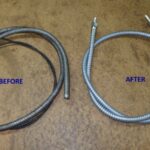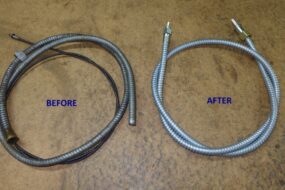When it comes to choosing a vehicle, one of the key decisions revolves around the type of transmission: manual or automatic. Each has its unique characteristics, advantages, and driving experiences. Let’s dive into the differences and explore some personal preferences along the way.
Understanding the Basics
Manual Transmissions: These require the driver to manually shift gears using a clutch pedal and gear stick. This setup allows for direct control over the vehicle’s power and speed, providing a more engaging driving experience.
Automatic Transmissions: In contrast, automatic transmissions shift gears on their own, freeing the driver from having to manually change gears. They utilize a complex system of hydraulics and electronics to determine the best gear for the current speed and driving conditions, making them easier for many drivers.
Key Differences
- Driver Engagement
- Manual: Driving a manual transmission often feels more connected to the vehicle. Enthusiasts appreciate the control and engagement it offers, making every drive feel more rewarding. There’s something satisfying about mastering the gear shifts and feeling the car respond to your commands.
- Automatic: While automatic transmissions provide ease and convenience, they can feel less engaging, especially for those who enjoy the art of driving. However, modern automatics, especially those with paddle shifters, offer a sportier feel that allows for some driver involvement.
- Fuel Efficiency
- Manual: Traditionally, manual transmissions are more fuel-efficient, as they provide a direct connection between the engine and the wheels. Drivers can optimize their gear shifts for better fuel economy.
- Automatic: While older automatic transmissions were less efficient, advancements in technology have led to more fuel-efficient automatics. Many now come equipped with multiple gears or continuously variable transmissions (CVTs), improving their efficiency significantly.
- Learning Curve
- Manual: Learning to drive a manual transmission can be challenging for some. It requires practice to master the timing of clutch engagement and gear shifting. For new drivers, this can be a steep learning curve.
- Automatic: Automatics are generally more user-friendly, making them the preferred choice for new drivers. The simplicity of just pressing the gas pedal and steering is appealing, especially in heavy traffic.
- Maintenance and Repairs
- Manual: Manual transmissions often have lower maintenance costs. They tend to be more durable and simpler in design, leading to fewer issues over time.
- Automatic: While automatics can offer smoother rides, they are more complex and can be more expensive to repair. Regular maintenance is crucial to ensure longevity, and transmission fluid changes should not be overlooked.
Personal Preferences
As someone who enjoys driving, I find a lot of joy in the engagement that a manual transmission offers. There’s a certain thrill in feeling the car respond to each shift, especially when navigating winding roads or tackling a spirited drive. That said, I also appreciate the convenience of an automatic for daily commuting or when stuck in traffic. The ease of an automatic can be a lifesaver during long drives or in stop-and-go situations.
Ultimately, my preference leans towards manual for weekend drives and enjoyment, while I wouldn’t hesitate to choose an automatic for everyday use. It all comes down to the driving experience you’re seeking.
Final Thoughts
Choosing between manual and automatic transmissions is a personal decision that depends on your driving style and preferences. Whether you enjoy the connection and control of a manual or the convenience of an automatic, understanding the differences can help you make an informed choice. Whatever your preference, the right transmission can enhance your driving experience!







